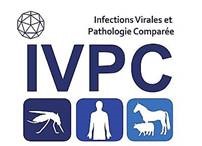Combined Antiviral Therapy Using Designed Molecular Scaffolds Targeting Two Distinct Viral Functions, HIV-1 Genome Integration and Capsid Assembly
Résumé
Designed molecular scaffolds have been proposed as alternative therapeutic agents against HIV-1. The ankyrin repeat protein (Ank(GAG)1D4) and the zinc finger protein (2LTRZFP) have recently been characterized as intracellular antivirals, but these molecules, used individually, do not completely block HIV-1 replication and propagation. The capsid-binder Ank(GAG)1D4, which inhibits HIV-1 assembly, does not prevent the genome integration of newly incoming viruses. 2LTRZFP, designed to target the 2-LTR-circle junction of HIV-1 cDNA and block HIV-1 integration, would have no antiviral effect on HIV-1-infected cells. However, simultaneous expression of these two molecules should combine the advantage of preventive and curative treatments. To test this hypothesis, the genes encoding the N-myristoylated Myr(+)Ank(GAG)1D4 protein and the 2LTRZFP were introduced into human T-cells, using a third-generation lentiviral vector. SupT1 cells stably expressing 2LTRZFP alone or with Myr(+)Ank(GAG)1D4 showed a complete resistance to HIV-1 in viral challenge. Administration of the Myr(+)Ank(GAG)1D4 vector to HIV-1-preinfected SupT1 cells resulted in a significant antiviral effect. Resistance to viral infection was also observed in primary human CD4+ T-cells stably expressing Myr(+)Ank(GAG)1D4, and challenged with HIV-1, SIVmac, or SHIV. Our data suggest that our two anti-HIV-1 molecular scaffold prototypes are promising antiviral agents for anti-HIV-1 gene therapy.
Fichier principal
 2015_Khamaikawin_Molecular Therapy—Nucleic Acids_1.pdf (1.3 Mo)
Télécharger le fichier
2015_Khamaikawin_Molecular Therapy—Nucleic Acids_1.pdf (1.3 Mo)
Télécharger le fichier
Origine : Fichiers éditeurs autorisés sur une archive ouverte
Loading...
